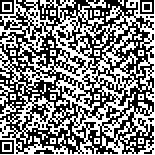| 摘要: |
| 末水条斑紫菜以组织捣碎机粉碎, 在10 mmol/L 磷酸盐缓冲液(pH 6.8)中反复冻融3 次, 收集上清液, 通过膨化床疏水层析技术分离R-藻红蛋白 (R-PE), 剩余残渣用于硫酸多糖提取。使用膨化柱分离,粗提液中约17%的藻红蛋白可以被回收, DEAE-Sepharose 离子交换树脂纯化后, 约12%的R-藻红蛋白得到回收, 光谱纯度大于3.2, 纯化得率为0.66 mg/g 鲜紫菜。吸收光谱、荧光发射光谱以及凝胶电泳均显示该藻红蛋白属于典型三峰型R-藻红蛋白。利用藻红蛋白提取后的残渣, 每克条斑紫菜可回收到30.5 mg的粗多糖, 其中硫酸基含量为21.8%。实验证明, 微波辅助抽提与热水浸提对硫酸多糖得率无显著影响。纯化的R-藻红蛋白与紫菜硫酸多糖可用于食品、化妆品添加, 或药品、保健品的开发。本文对探索次等紫菜生物质的综合、高值化利用, 进一步促进我国相关产品的开发与应用具有重要意义。 |
| 关键词: 条斑紫菜 R-藻红蛋白 硫酸多糖 膨化床吸附 离子交换色谱 |
| DOI:10.11759/hykx20141017002 |
| 分类号: |
| 基金项目:江苏省产学研前瞻性联合研究项目(BY2011188); 南通市2014 年科技计划项目(AS2014008); 国家科技支撑计划项目(No.2012BAC07B03); 国家海洋局公益项目(No. 201105023-7,201105008-2) |
|
| Comprehensive extraction of R-Phycoerythrin and sulfated polysaccharide from Pyropia yezoensis (Bangiales, Rhodophyta) |
|
|
| Abstract: |
| Inferior Pyropia yezoensis was fragmented and then extracted with 10 mmol/L phosphate buffer (pH 6.8) for three times. The supernatant of the extract was applied to an expanded bed adsorption column for collection of the R-phycoerythrin (R-PE) while the residue was used for isolation of sulfated polysaccharide. Approximately 17% of the R-PE presented in the crude extract was recovered by the method of expanded bed adsorption. After purification on a DEAE-Sepharose ion-exchange column, the R-PE was obtained with a purity ratio higher than 3.2, and the purification yield was 0.66 mg/g fresh P. yezoensis. Absorption spectroscopy, fluorescence spectroscopy, and electrophoresis showed that the R-PE obtained here had the typical molecular properties reported previously. The yield of sulfated polysaccharide from the residue was 30.5 mg/g, and the sulfate fraction was 21.8% of the crude polysaccharides. The results showed that there were no significant differences between those obtained by direct extraction and microwave-assisted extraction from the residue. The R-PE and sulfated polysaccharide extracted from algae could be used as additive in food or cosmetics. In comparison with the traditional utilization of P. yezoensis only as the source of chips, the integrated exploitation method suggested here was more efficient and had additional benefits. |
| Key words: Pyropia yezoensis R-phycoerythrin polysaccharide sulfate expanded bed adsorption ion-exchange chromatography |
